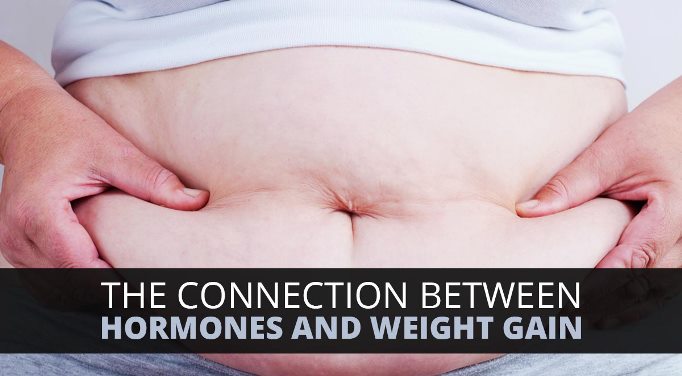 Central obesity, or fat concentrated around the belly, has its own set of harmful effects on health that can be helped with the anti-inflammatory diet. It’s not so much about the number on the scale, as it is about how much abdominal fat that is a factor in things such as cardiovascular disease, cancer, diabetes, fatty liver, osteoarthritis, and depression.
Central obesity, or fat concentrated around the belly, has its own set of harmful effects on health that can be helped with the anti-inflammatory diet. It’s not so much about the number on the scale, as it is about how much abdominal fat that is a factor in things such as cardiovascular disease, cancer, diabetes, fatty liver, osteoarthritis, and depression.
The Body-Mass-Index (BMI) is the standard of measuring body fat, but it doesn’t take into consideration the way fat is distributed throughout the body. To have a more accurate reading of belly fat, there are a couple of other methods of testing.
One of those is the waist-to-hip ratio. You can even try it right now.
To find out your waist-to-hip ratio, take a measuring tape, relax your belly muscles, and then measure your waist around the navel point and your hip around the widest point. Then divide the waist measurement by the hip measurement and you have the ratio. In women, over 0.85 is a risk factor, and it is advisable to get that ratio down.
You can also just measure your waist only.
Put your feet together. Make sure your belly is relaxed, and the tape is wrapped around your waist as evenly and accurately as possible. If the measurement exceeds 35 inches, you’re at high risk for health issues. If it’s between 31.5 and 35, you’re at moderate risk. If it’s under 31.5, you’re at low risk.
But it’s advisable that you have these measurements confirmed by a professional, who might do other kinds of tests as well.
An important question is, why is belly fat worse than other kinds of fat?
For the answer, we can look back to the subcutaneous vs. visceral fat discussion. As mentioned, subcutaneous fat is that which is found right under the skin. It’s still problematic, but it’s not as much as visceral fat, which is found inside the abdomen and in between the organs.
There are a couple of reasons why visceral fat is more dangerous.
First of all, these specific fat cells release free fatty acids into portal circulation that feeds into the liver. The fatty acids build up in the liver as well as in other organs such as the pancreas and heart. When this happens, these organs begin to dysregulate, causing issues with blood sugar, cholesterol, and insulin.
Belly fat also increases cytokine production. Cytokines are molecules that indicate or trigger a pro-inflammatory state. They also get in the way of other hormones, including those that deal with mood, appetite, and stress.
Visceral fat is associated with the body’s stress response . It raises blood pressure, blood sugar, and cardiovascular health risks.
 The connection between Adrenal Fatigue Syndrome (AFS), the NeuroEndoMetabolic (NEM) Stress Response, inflammation, and central obesity can be summed up in one word. Stress.
The connection between Adrenal Fatigue Syndrome (AFS), the NeuroEndoMetabolic (NEM) Stress Response, inflammation, and central obesity can be summed up in one word. Stress.
The NEM is the body’s overall strategy for dealing with stress. It is composed of six circuits, each one with organs and systems working together as a unified front against the ravages of stress, and each circuit also working with the other five.
These circuits are the hormone response, the metabolism response, the cardionomic response, the neuroaffective response, the inflammation response, and the detoxification response.
The adrenal glands are part of the hormone response, and they are the body’s first defense against stress. They are two small organs that rest on top of the kidneys and produce over 50 different hormones. Their main weapon in the fight against stress is the hormone cortisol.
Cortisol is responsible for maintaining heart and blood vessel functions, regulating blood pressure, suppressing the immune system, and neutralizing inflammation.
Although stress is a natural part of life and your body is fully equipped to handle it, the problem arises when it becomes chronic. With chronic stress, whether physical, mental, or emotional, the adrenal glands and the overall NEM Stress Response are overworked.
In the beginning stages of AFS, cortisol production increases in order to meet the growing demand. In later stages, when the adrenals are exhausted, cortisol output drops. Symptoms of AFS include weight gain, fatigue, sleep disturbances, brain fog, lowered immunity, PMS, low libido, anxiety, mild depression, memory loss, food sensitivity, and heart palpitations.
Interestingly, this dysregulation of cortisol has an important effect on abdominal fat.
The entire body contains cortisol receptors. However, the central abdomen contains a very high concentration of them as compared to the rest of the body. When cortisol production increases during the early stages of AFS, the cortisol receptors in the abdomen are continuously stimulated to store more and more fat.
This causes fat around the body to be redistributed and focused on the belly.
That is not the only link. Fat is also a part of the process of cortisol production. Cholesterol produced by the adrenal glands, intestines, liver, and reproductive organs is stored in adipose tissues until there is a need for steroidal hormones.
The cholesterol is then converted into pregnenolone, which in turn is converted into progesterone or DHEA. The pituitary gland then makes adrenocorticotropic hormone, which signals the adrenal glands to take the progesterone and turn it into cortisol.
Each step of this process needs energy, and so to make it less energy consuming, the fat that contains the needed building blocks of cortisol are moved closer to the organs that convert cholesterol to cortisol, mainly in the abdomen.
Although that does help the adrenal glands to secrete more cortisol, the fat that accumulates around the belly to facilitate this process is detrimental to health.
 Meanwhile, the belly fat that’s piling up is now affecting the thyroid and pancreas, triggering insulin resistance and hypothyroidism. The consistently high cortisol is also adding to insulin resistance and messing with delicate metabolic processes.
Meanwhile, the belly fat that’s piling up is now affecting the thyroid and pancreas, triggering insulin resistance and hypothyroidism. The consistently high cortisol is also adding to insulin resistance and messing with delicate metabolic processes.
Now, things are getting dangerously close to metabolic syndrome, with its own set of symptoms that are quite similar to AFS symptoms. These include tiredness, weight gain, feeling sluggish after eating, high blood pressure and cholesterol, brain fog, and signs of aging faster than others.
Metabolic syndrome can set the stage for a decline in overall health and the development of cardiovascular problems, diabetes, and even Alzheimer’s down the road. An anti-inflammatory diet can help.
A big issue affecting women’s health in modern living is hormonal imbalance in general, and estrogen dominance specifically.
Estrogen is a growth-stimulating female hormone that increases body fat, thickens the endometrial layer in the uterus, and makes the breasts grow. Ideally, it should be in balance with progesterone.
Progesterone helps convert fat to energy and maintains the secretory endometrium. It protects against endometrial cancer and breast cancer, as well as fibrocystic breasts.
However, the toxicity in the environment and modern lifestyles exposes you to xenoestrogens, which act like estrogen after entering the system. These cause estrogen levels to become higher than progesterone levels. This is why it’s called estrogen dominance.
Xenoestrogens can come from plastics, solvents, pesticides, and other such sources that are best avoided. Eating organic might be a good way to avoid this imbalance.
Estrogen dominance symptoms include swollen breasts, endometriosis, irritable mood, fibroids, irregular periods, inflammation, PCOS, autoimmune disorders, low libido, hair loss, brain fog, and many others.
Health problems such as liver congestion and AFS can also cause or aggravate estrogen dominance.
With AFS, the “fight or flight” response is more frequently triggered, and it releases insulin to help cells take in glucose from the blood to get more energy. This excess insulin makes the ovaries produce androgens (male hormones) and more estrogen.
The relationship between estrogen and inflammation is a bit complex, as estrogen can have both an anti-inflammatory and pro-inflammatory effects. There are many factors involved, and the research is still underway. Hormone imbalance of any kind does appear to create a pro-inflammatory state in the body.
It might seem impossible to deal with hormonal issues, inflammation, and autoimmune disease all at once, but the good news is that the adjustments needed for one will improve the rest. This begins with healing the gut, shedding extra weight, and eating an anti-inflammatory diet and supporting hormonal balance.
It’s no secret that, in general, we’re getting heavier. The typical diet has become much more unhealthy, with processed foods, refined sugar, high fat, low fiber, and unbalanced portions. Fast food chains on every corner make it cheaper and easier to eat out than to cook fresh, healthy meals at home.
 Many jobs are now desk-and-computer focused, with barely any need to do physical activity as part of a normal routine. You have to actually set time aside to work out, rather than it being a part of your day, and not many people feel they have the time or energy to do this with such busy schedules. This lifestyle increases stress and inflammation, and both of these factors are connected to diet and exercise.
Many jobs are now desk-and-computer focused, with barely any need to do physical activity as part of a normal routine. You have to actually set time aside to work out, rather than it being a part of your day, and not many people feel they have the time or energy to do this with such busy schedules. This lifestyle increases stress and inflammation, and both of these factors are connected to diet and exercise.
This is why a holistic approach is the best way to make sure all your bases are covered, starting with an anti-inflammatory diet and good for weight loss as well.
If you have any hint of dysbiosis, healing the gut should also be the first priority. Ensuring a healthy and vibrant microbiome will help with everything else, from clearing up digestive issues and increasing immune efficiency, to bringing down inflammation and absorbing the nutrients you need.
If you have AFS, it’s a good idea to get some anti-inflammatory diet coaching that can help heal your gut and support your adrenal glands. As you begin to recover, you will find that just as they both aggravated each other, when one grows stronger, it supports the other as well.
Another top priority here is to reduce and manage stress. There are a number of ways you can do that no matter what condition your health is in.
If your stress is mental/emotional in nature, consider therapy, meditation, group support, journaling, taking walks in nature, and allowing yourself a breathing gap between an emotional trigger and your response. The more you train yourself, the more equilibrium you are able to bring to your mind and emotions, even if life situations get challenging.
Getting rid of physical stressors is very important as well. These methods can help relieve stress on your body:
More on the types of foods and eating habits to cut down on is explained in the anti-inflammatory diet protocol outlined below.
With all of these suggestions, don’t overwhelm yourself with too many changes at once, as this will add to your stress and will not be a sustainable solution. You may consider getting lifestyle coaching to help you transition to a healthier daily routine.
Also, for each of the above points, be sure to change things gradually and with a good understanding of how it will affect your particular condition.
 For example, if you have AFS and you’re considering cutting down on caffeine, it’s important to do this very slowly, while supporting your body with a lot of rest and a good anti-inflammatory diet. Otherwise, you may find yourself in a difficult withdrawal. You might consider first attending to the adrenals, before attempting to quit caffeine completely.
For example, if you have AFS and you’re considering cutting down on caffeine, it’s important to do this very slowly, while supporting your body with a lot of rest and a good anti-inflammatory diet. Otherwise, you may find yourself in a difficult withdrawal. You might consider first attending to the adrenals, before attempting to quit caffeine completely.
As for nutrition, an anti-inflammatory diet that is supportive of adrenal function is a great way to ensure you give yourself the best chance for lasting recovery.
There are two things to take into consideration when crafting your anti-inflammatory diet. What to avoid, and what to add.
Let’s begin with what to avoid.
© Copyright 2017 Michael Lam, M.D. All Rights Reserved.

